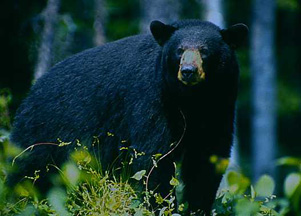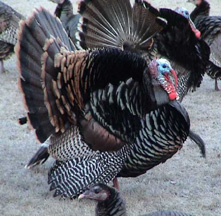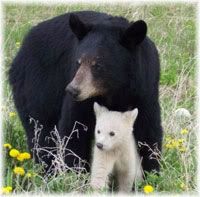



 The Accurate Reloading Forums
The Accurate Reloading Forums  THE ACCURATE RELOADING.COM FORUMS
THE ACCURATE RELOADING.COM FORUMS  Hunting
Hunting  American Big Game Hunting
American Big Game Hunting  Re: This baffles me to no end...
Re: This baffles me to no end...Go  | New  | Find  | Notify  | Tools  | Reply  |  |
| one of us |
Hope That Helps. FWIW, Dutch.  | ||
|
one of us |
I can appreciate your view Brent, but it's not really about 'making money' , rather, I see it as a way of covering some of my own hunting expenses, including tags, gas, etc. It is an effective way of offsetting hunt costs. I just hate to see these capes go to waste. Example: While at the taxidermists on my way back from my last trip, a guy was dropping off a nice whitetail rack that he had killed a couple of years before. He split his deer's cape right up the centerline of the neck to 'bleed' it. He was under the impression that the taxidermist could hide the slice completely. Wrong. Now he has to pay $175 for a tanned 24" full swell November cape in addition to the $400 taxidermy bill (which is lowered a bit because the cape is ready to mount). Which happened to be a cape I got from a hunter in Iowa. It cost me $10, and $45 to tan (including shipping). All that has to be done is take it off the skull, flesh it a bit, roll it up and freeze it. It's called a 'green cape.' I've never had a problem selling capes. When I graduated from school in Iowa, I had over 35 whitetail capes in my freezer that I paid up to $15 each for over a 4 year period of time. When I spent 6 mos back in Alabama, I got top dollar for them since most southern Taxidermists do not see their fare share of midwestern capes. I had one beautiful cape from a whitetail, had almost jet black skull cap, with a black stripe down to his nose, bleach white around his eyes and nose, and a double white throat patch, and reddish hair on his ears. I got $225 for it GREEN...Not tanned. So, I guess, in a way, every time you throw away a cape, your tossing $50 dollar bills out. I just think it is a waste.  | |||
|
one of us |
Sorry, what is BTDT? Plus, your situtation is a special circumstance. I was more focused on what you may see at a butcher's place. Which means that the hunter was able to bring in the whole animal. Lugging a 50 lb cape another 3 miles is questionable and to each his own. I can't say I would have taken it either in that case. | |||
|
| one of us |
Been there, done that.... (got the t-shirt and the visa-stamp). HTH, Dutch. | |||
|
one of us |
OH, and so, what is HTH? Sorry, I'm still learning forum lingo. | |||
|
| one of us |
There is an organization that takes hides to be tanned and used on wheel chairs, crutches and leather gloves. This is a veterans type organization I think? I saw a few donation barrels in front of several refrigerated trailers that were set up by several meat cutters as processing drop off points. (northern AZ) I cant remember the organizations name but that is a great use of unwanted hides in my view. I have just donated the hides and capes I didn't want to taxidermists over the years. | |||
|
| one of us |
I drug my moose cape into the taxidermist, and that didn't even pay for mounting the antlers. When I have an elk down, I usually have better things to do than packing another 40 or 50 lbs out for three miles..... BTDT, won't do it again. JMO, Dutch. | |||
|
| one of us |
Well, I for one have little use for capes. But if you know of a ready market, I could be persuaded to collect them. Personally, I don't hunt to make money, quite the contrary actually. But if there is a big enough market, I could be induced to go to the bother. Brent | |||
|
one of us |
I will do my best to find a site for that but in the mean time, if the hunter is uncomfortable doing it, just take the head to a taxidermist and let them do it. I paid a guy $10 bucks in Wyoming to do my mulie. You need a small blade knife and flat head screw driver. I basically make a "Y" incision beginning about 7" down the neck from the ears then up to each antler base. Take the screwdriver and peel the skin from around the pedicles at antler base. Pull skin downward towards jaw and expose ear butt muscles. Cut right through them. Slowly work your way fwd to the eyes (be careful here not to cut eyelids). I like a scalpal for the tear ducts...which are deeper on a mule deer. Peel skin fwd to nose and mouth. Again, be careful to include on the cape the skin inside the nostrils and inner lips. This gives the taxidermist something to work with. When in doubt, keep as much flesh/skin on the cape. Be sure to take measurements on the animal before caping (eye to nose). After caping, measure around the atlas (first vertebrae in neck behind ears), then 3 inches down the neck from there. Best thing to do is watch a taxidermist or someone experienced do it first. But I assure you, it is easy once you've done it a couple of times. On a side note, be very very careful on antelope. Their hair is so very delicate. I just sold the last 4 Missouri capes I had: 22" and bigger. I got $525 for all. | |||
|
| one of us |
OK.. I see what you're saying but I thought that caping an animal involved all the hide from the front shoulders to the tip of the nose... Note: I'm really ignorant of this stuff because I've never had a deer mounted and wouldn't know where to start. Here we just take pictures if they're huge and saw off the antlers... Yeah... I know... We're just rednecks...  I would have no problem taking a few heads to a taxidermist and giving them to him/her if they could use them. We already give a lot of them to the biologists for testing for age (jaws) and CWD. In Florida it's not legal to sell any part of a game animal and that might well include the hide. The neck provides a "neck roast" which is one of my favorite parts of a deer so I'd not likely want to give one up to a taxidermist. Maybe I should ask a local taxidermist what they really need.  $bob$ | |||
|
| one of us |
I try to cape everything I can when practical to do so. Bulls and bucks over 3 years old with late season capes typically. I give them to a taxidermist I know and he keep track and gives me credit toward a mount. When I finally decided to get something mounted I hope all my effort will have paid off. If nothing else I am glad the hide is not going to waste. | |||
|
| <firemen> |
Gave my cousin a real big cape last year off a 10 poiner and the taxidermist said it was no good the hair slipped. But he had another one he could buy,ya right I said. | ||
|
one of us |
Quote: All the reason more to keep a few of your own on hand!!  | |||
|
| one of us |
Make sure you know your taxidermist to whom you're bringing all this stuff too!! I have a taxidermist friend that I trust with my hides and critters, and don't mind bringing him capes. Several years ago, I shot a heck of a whitetail that had a really dark brown cape with great color around the eyes and throat...it was in perfect condition. I didn't know if I wanted to mount the deer or not, so I figured that I would at least have another taxidermist dude send it to the tannery for me just so I could have it around. Anyhow, several months later I called to see how the progress was coming and he told me that he had "lost" my cape. Then about three weeks later he called back and said he had found what he thought was my cape. I looked at what he had found, and it wasn't the same deer!! My thought was that he had someone else who needed my cape more than I did, and sold it!!   Anyhow the way I figure it, if you are bringing in something that is the critter of your lifetime, be sure you trust the dude whom you're bringing it too....I have heard too many horror stories of big racks and capes dissappearing!! MG | |||
|
one of us |
This is true. That is why I'll send the cape off to the tannery myself sometimes. I've heard many stories about lost capes, etc. Trust does become an issue. | |||
|
| one of us |
First of all. Do not split the hide up past the ribs like you do when you really want to open them up. Find the point midway along the body where the fur reverses and cut around the body to the top of the back as though you were cutting the critter in half. Make a cut as needed on the back of the fron legs to skin out the front legs. Cut along the back straight up toward the middle of the horns and skin down as you go. The most difficult part is around the head so you can cut off the head with the cape attached and have a taxidermist do that. If you need or want to do it yourself, follow Doc's instructions from there on out: From Doc's post: You need a small blade knife and flat head screw driver. I basically make a "Y" incision beginning about 7" down the neck from the ears then up to each antler base. Take the screwdriver and peel the skin from around the pedicles at antler base. Pull skin downward towards jaw and expose ear butt muscles. Cut right through them. Slowly work your way fwd to the eyes (be careful here not to cut eyelids). I like a scalpal for the tear ducts...which are deeper on a mule deer. Peel skin fwd to nose and mouth. Again, be careful to include on the cape the skin inside the nostrils and inner lips. This gives the taxidermist something to work with. When in doubt, keep as much flesh/skin on the cape. Be sure to take measurements on the animal before caping (eye to nose). After caping, measure around the atlas (first vertebrae in neck behind ears), then 3 inches down the neck from there. Best thing to do is watch a taxidermist or someone experienced do it first. But I assure you, it is easy once you've done it a couple of times. Also you should take pictures of the head if you know you want it mounted. Take profile shots and such. Bighorn sheep can espcially be difficult for horn placement and such unless you have good pictures. | |||
|
one of us |
Well, lets back up a bit. I thought it was understood that the entire 'cape' does indeed begin about 6-8" behind the shoulders. I was referring to getting it off the skull after it was skinned from the shoulders on up to the neck. So, you are right about that. I assumed it was common knowledge. All of the skin from behind the shoulders to the tip of the nose is 'the cape.' | |||
|
| one of us |
Quote: My taxidermist capes the deer when it is brought in and removes the rack. He keeps the cape and the hunter keeps the rack until the taxidermist needs it to finish the mount. He doesn't have to store the racks, and the hunters get to show them off. | |||
|
| Powered by Social Strata |
| Please Wait. Your request is being processed... |
|
 The Accurate Reloading Forums
The Accurate Reloading Forums  THE ACCURATE RELOADING.COM FORUMS
THE ACCURATE RELOADING.COM FORUMS  Hunting
Hunting  American Big Game Hunting
American Big Game Hunting  Re: This baffles me to no end...
Re: This baffles me to no end...

Visit our on-line store for AR Memorabilia

